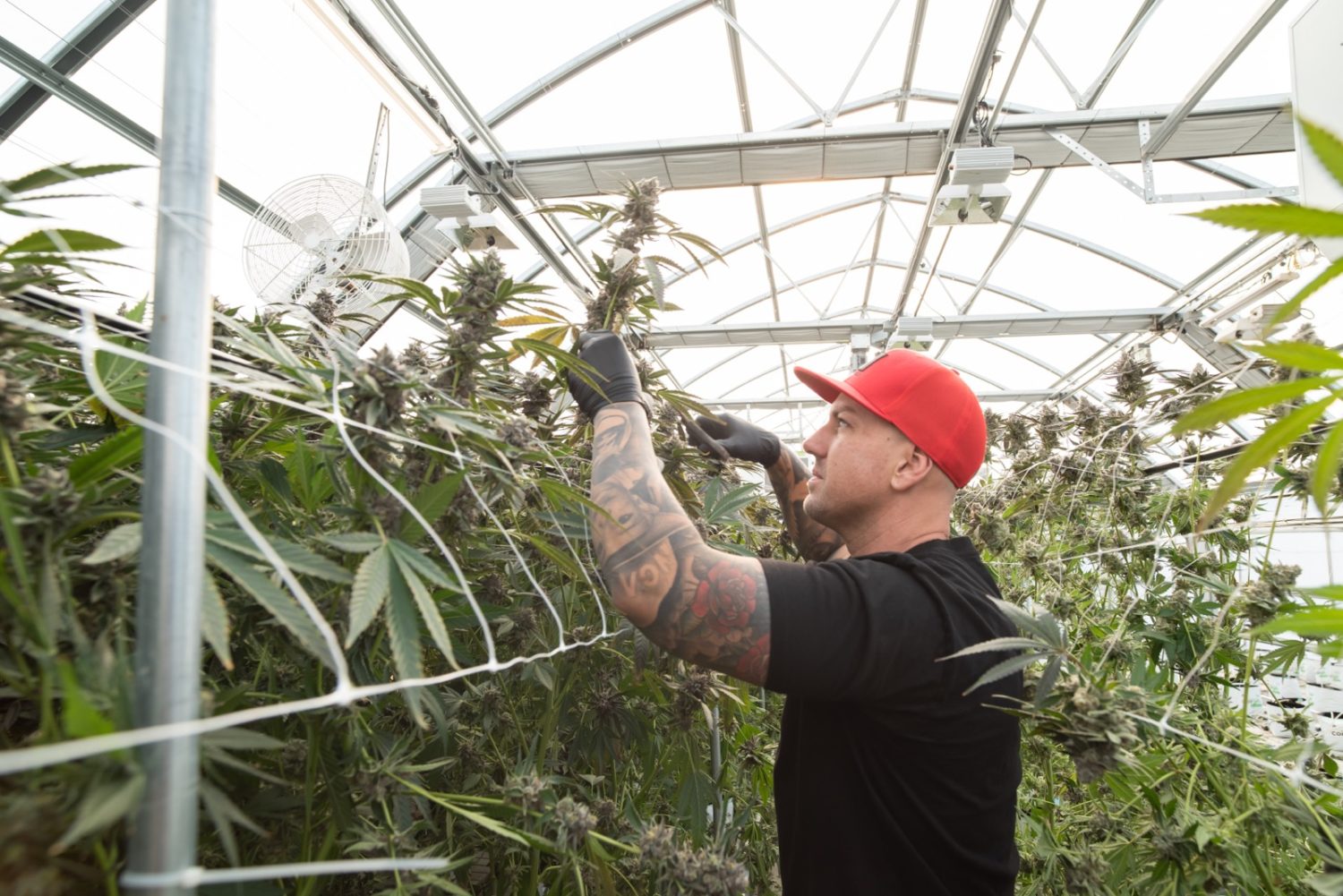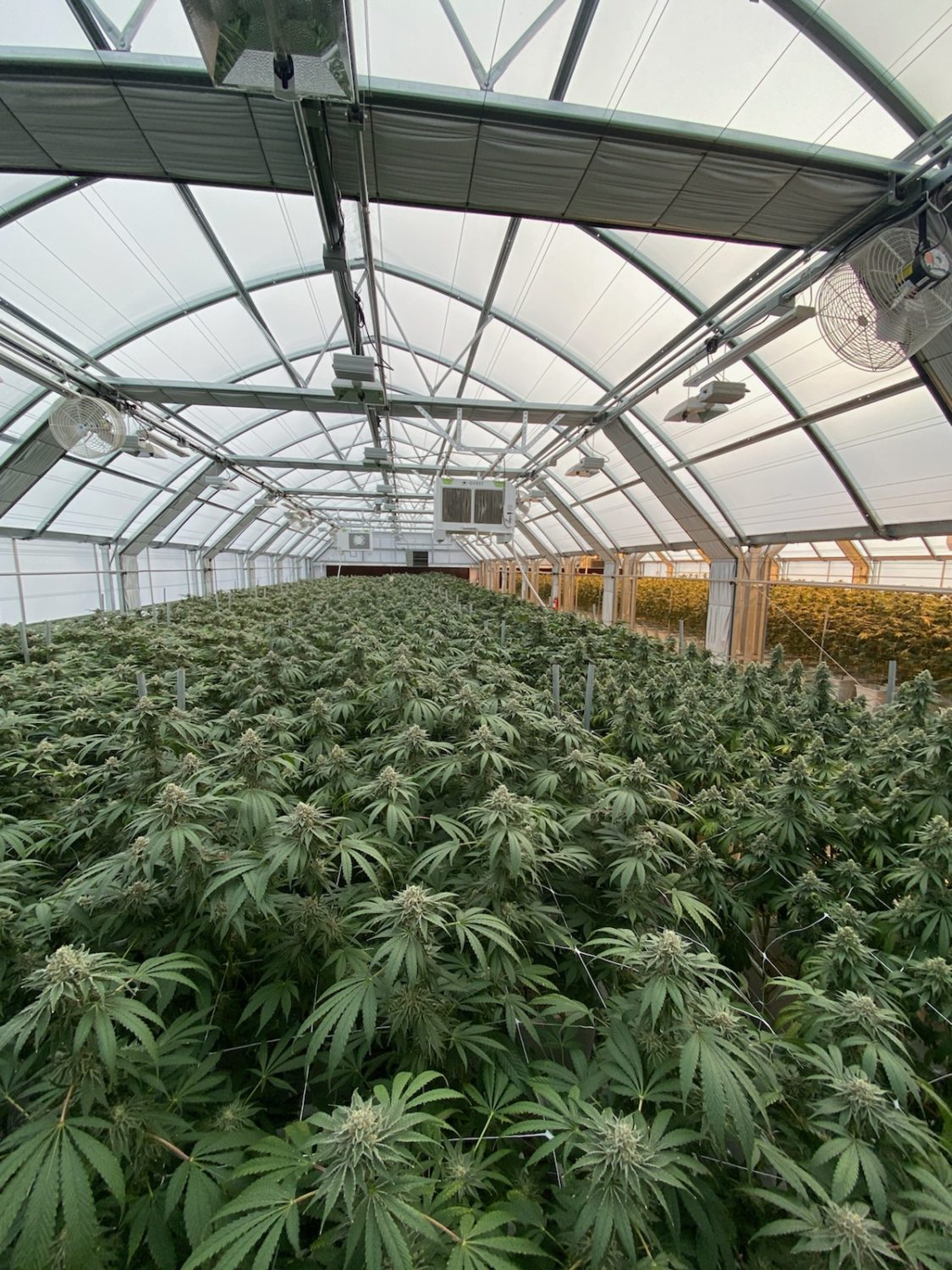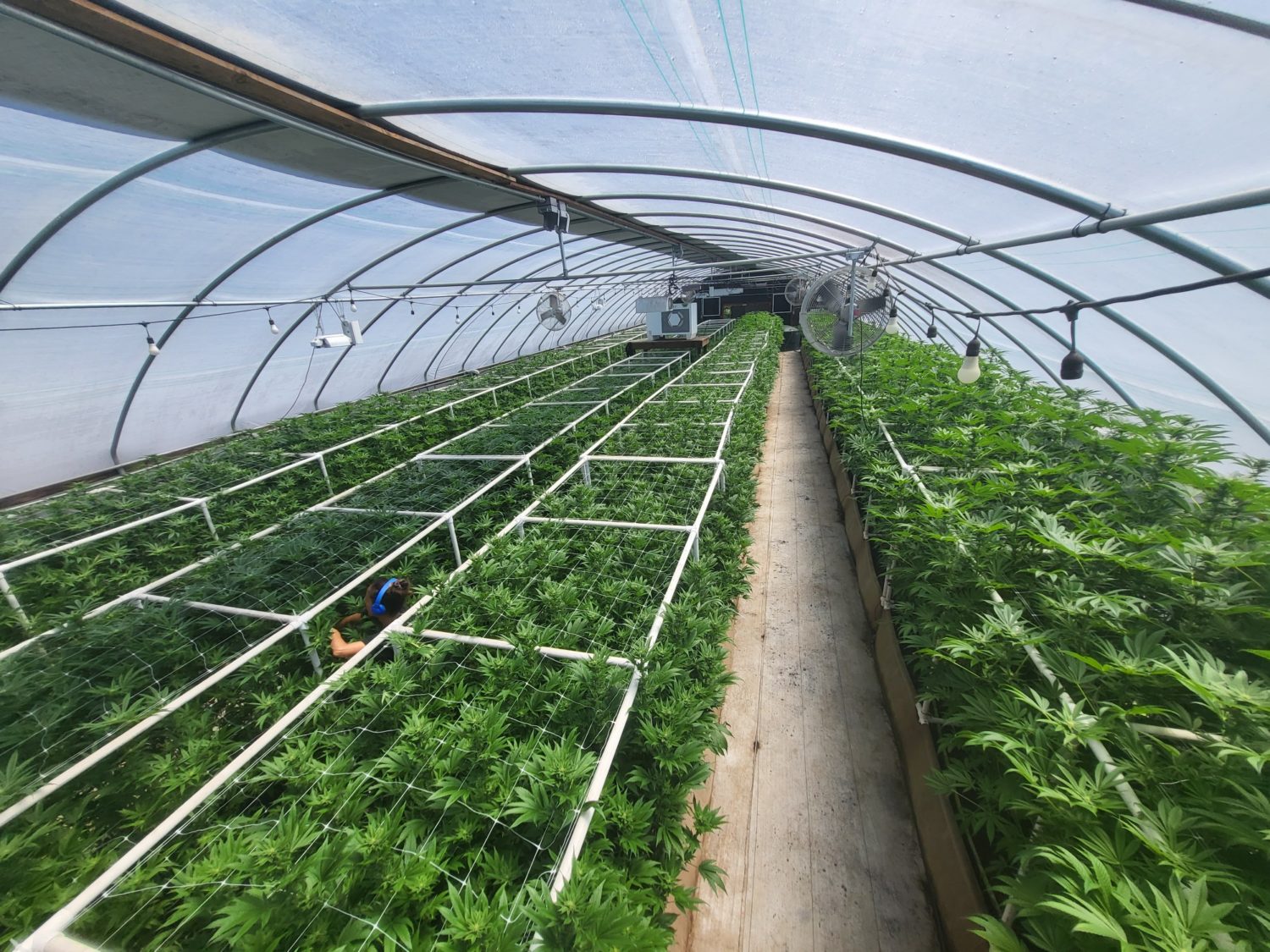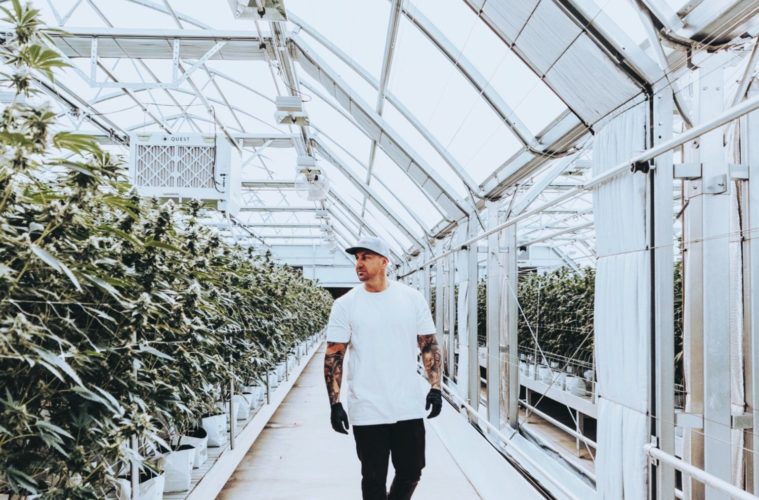California’s winter-grown mixed-light cannabis is among the best flowers of the year, period.
The crop falls into two categories. The light-assisted and light-deprivation grown. The first is self-explanatory. The second is the term for farmers controlling the natural light cycle by mechanical means. Most of the stuff growing right now is light-assisted, but there are still a few people without power producing some really flavorful weed up north this time of year.
The light-deprivation stuff is shortened to deps for simplicity. A lot of dep farmers take the heart of the winter off and still get in three runs a year. But those perpetual light-assisted grows that use the power of the sun year-round are able to just perpetually pump out whatever number of tables on their fixed 52-week schedule. Barring the perils of mother nature, there are farmers using the sun and a little extra light to help through the rainy days and shorter ones are producing crazy high-end cannabis.
One of the most respected owner-operators in the light-assisted space is David Polley of Preferred Gardens — a lot of people have him with a seat at the table when discussing not only who is growing the best mixed-light cannabis in California, but also in Florida.
Polley explained that you can run some nice deps in the winter with enough natural light, but the production isn’t there.
“An expert with Winter Deps would usually only grow cannabis for hash in the winter,” Polley told L.A. Weekly. “Flower production is very limited, but the cannabinoid, terpenes and flavonoids are actually at an all-time high. So fresh frozen (material frozen immediately at harvest for processing) will put out some A1 rosin.”
Polley explained the basics of his process that’s a bit more commercially viable this time of year. Specifically, light-assisted greenhouses that have climate control and you utilize artificial lighting to increase the daily light integral to increase production during the shorter winter months.

Polley in the garden.
“In Cali, that usually starts in September and ends in March or April,” Polley said, “In my biased opinion, the artificial light mixed with the natural kiss from the sun creates the best medicinal cannabis on the planet. Lab tests show cannabinoids and terpenes much higher under these practices. I love the effects from good light-assisted cannabis.”
Polley further explained that the harness of the California sun during the summer is just too much for all the best stuff in the resins that have developed on the plant.
“Like it’s extreme during the summer in California and the light levels are through the roof,” Polley said, “so I tried to shade my greenhouses more in the summer than I would anytime to get less light and that’s how you get more of like an exotic flavor.”
He argues what’s going on in the industry right now is people are just trying to pump these plants with so much light intensity via LEDs and whatever else the hottest new tech is.
“They’re just slamming them so they could get four pounds a light, just production, production,” Polley said in distaste. “But, that’s why the quality of more than half of the cultivators is just not it. It’s not what we want because they’re just focused on production.”

Photo courtesy of Preferred Gardens
Polley pointed to great genetics as a key to the flame as he prepares to enter the Arizona market, already having crushed it in two other states.
“I’m pheno hunting 50 seeds every week. I’ve been doing that for eight-plus years,” Polley said. “What’s crazy is that’s 200 seeds a month and we only come out with three to five winners a year.”
Mendoja Farms is another of the state’s top light-assisted producers. After going hard with four big runs in 2022, owner Justin Wilson is taking a month off from flowering and just maintaining his nursery stock before he revs back up next month.
As for the quality of the winter products, Wilson argues a lot of it is temperature and how physically far we are from the sun.

Photo Courtesy of Mendoja Farms
“The winter run seems to have twice the amount of trichomes on them,” Wilson told L.A. Weekly. “I feel that it has to do with just the distance of the sun, how far it is from us, and having to warm the rooms up with propane heat.“
Wilson believes the stress on the plants from too much heat is far more stressful on the plants than on some chilly nights.
“They just seem to like the cold a little bit better. I wouldn’t say cold. I would say that the colder temperatures where I’m at in Covelo and not dealing with strenuous heat that we do have here during the summer,” Wilson said.
We asked Wilson if it’s easier to get away from market trends this time of year since the more exotic flavors have a good shot at being so full-flavored.
“Yes, it is for sure,” Wilson replied. “I think you can play around more in the winter because you’re gonna have the flavors coming out more in everything. So you don’t have to stick to those saying name-brand stuff and what everybody else wants. That’s when I kind of do like my trial runs.”
Wilson pointed to the fact that a lot of people do their pheno hunt closer to the middle of the year. It’s a double-edged sword. Those mid-year hunts may not get the same terpene levels as the winter, but they’re being stress-tested by the summer heat through the hunt. Wilson has found stuff that was awesome in the winter, but not able to deal with the heat of summer.
Advertising disclosure: We may receive compensation for some of the links in our stories. Thank you for supporting LA Weekly and our advertisers.

